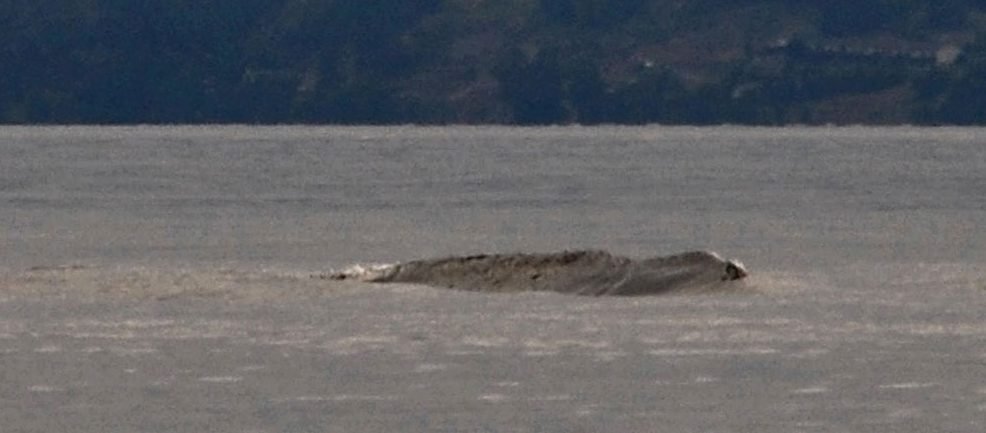
Visitors to Okanagan Lake in British Columbia have reported seeing a mysterious creature swimming in its waters for decades. The Ogopogo, Canada's most elusive lake monster, is this creature. While skeptics may dismiss these reports as nothing more than urban legend, many people believe that this creature does exist. In this blog post, we will look at some of the most well-known sightings and see if they provide any evidence that the Ogopogo truly exists beneath the waters of Okanagan Lake.
An Overview Of The Ogopogo: What is it?
Native American tribes have passed down the legend of a mysterious creature living in Okanagan Lake for hundreds of years. The Ogopogo, an underwater serpent-like beast, is said to bring bad luck or sickness to those who cross it. Reports of sightings began to increase significantly in the late nineteenth and early twentieth centuries, prompting some to speculate that perhaps this mythical creature was real.
A Map Showing Lake Okanagan
People have been captivated by tales of its existence for generations, and many are still determined to prove or disprove its existence today. Various sightings and blurry photographs have surfaced over the years, but none have been able to conclusively prove whether or not the Ogopogo is real. Regardless, people continue to flock to Okanagan Lake in the hopes of spotting the elusive lake monster (much like Loch Ness Monster).
The myths and stories surrounding this elusive creature will fade as the centuries pass. Many people believe that until we can gather more evidence or find definitive proof of the Ogopogo's existence, the mystery of the Ogopogo will remain one of life's unsolved mysteries, enthralling us all.
Ogopogo and the Spiritual Beliefs of Canada's Native American Community

For centuries, the Ogopogo has been a part of Native American folklore and spiritual beliefs. For generations, tribes in the Okanagan Valley have regarded Lake Okanagan as a powerful manifestation of nature with mysterious abilities to guide lost souls home or punish those who violate its laws. These beliefs serve to remind them of the importance of respecting and protecting nature in order to promote community harmony.
Because stories about the Ogopogo are passed down through generations, each tribe's interpretation may differ slightly. Some regard it as a friendly spirit who watches over them, while others regard it as a dangerous force that must be feared and respected. In any case, the mythical creature has become deeply ingrained in the culture and traditions of the native tribes who live near Lake Okanagan.
Many people believe that if certain ceremonies are performed correctly, they can help appease the Ogopogo, allowing people to coexist peacefully with its presence in the lake. However, due to a lack of evidence, some scientists remain skeptical of these claims, making resolution of these opposing viewpoints difficult. Nonetheless, Native Americans continue to believe in its power today.
So, what makes Native American tribes believe in Ogopogo? They pass down stories about its mysterious powers from generation to generation, reminding them how important it is to respect nature's gifts or face its wrathful punishments. This belief is an integral part of their traditional practices, uniting them around a single cause: respect for both land and water.
Significant Ogopogo Sightings

People living in the Okanogan Valley have reported sightings of a mysterious creature inhabiting its depths for centuries. This cryptid, known as the Ogopogo, is said to resemble a large snake-like beast with a head and four humps stretching along its body. Although little is known about its origins or biology, numerous accounts from throughout history claim to have witnessed it emerge from the lake's waters.
One of the most well-known sightings happened in 1968, when two local teenagers went swimming in Okanogan Lake. They were suddenly surrounded by an unknown "serpentine" figure, who made several passes around them before disappearing into deep water, according to their account. Several other witnesses came forward that year, claiming to have seen something similar on separate occasions, but none could provide any physical proof other than their word.
Another notable sighting occurred nearly ten years later near Kelowna, when six members of a family claimed to have seen a large snake-like object emerge from the water. They described it as being about 40 feet long and gave such detailed descriptions that many people still believe this is one of the most convincing cases for believing in the existence of the Ogopogo. Unfortunately, no photographs or video footage were taken during this experience, so its authenticity remains in question.
The First Known Sighting

For more than a century, generations of people have been fascinated by the enigmatic Ogopogo. The creature was first seen in 1872 by explorer John MacKay, who described seeing a "gigantic creature" swimming in Okanagan Lake, British Columbia. Hundreds of people have come forward since then with stories about their own sightings and encounters with the beast.
Despite decades of investigation and numerous attempts to capture it on film, there is little concrete evidence to support its existence other than eyewitness accounts and grainy images taken by amateur photographers. Nonetheless, the Ogopogo's allure remains strong in local communities, and it continues to captivate those near Okanagan Lake who are looking for answers about what lurks beneath its waters.
Regardless, as more information about potential sightings across North America's lakes and rivers becomes available each year, these reports continue to pique the interest of those interested in cryptozoology. It is up to you whether or not you believe their validity, but it certainly makes for an interesting topic of debate even today!
Does The Ogopogo Exist?
For generations, the Ogopogo, Canada's most elusive lake monster, has piqued people's interest. While some skeptics claim it is nothing more than local folklore created to entertain and amuse, there have been numerous sightings reported throughout history that suggest something much more mysterious lurks beneath the waters of British Columbia's Lake Okanagan.
Rather than being put off by these reports, many people are intrigued and make annual pilgrimages to Lake Okanagan in the hopes of catching a glimpse - though none have been successful so far. Even so, this hasn't stopped people from speculating about what they're seeing when they spot something unusual out on the lake.
So, what do all of these sightings tell us about whether or not this enigmatic creature exists? Unfortunately, without hard evidence other than eyewitness accounts, it is impossible to say definitively either way, but one thing is certain: interest in the Ogopogo has grown over time and shows no signs of abating anytime soon! Whether you believe it exists or not, there is no denying that stories about Canada's most elusive lake monster make for an exciting story worth exploring further now and in the future.

We all want a home that strives for open communication. Good communication fosters trust and understanding, which are two of the most important pillars of any family. Unfortunately, communication is not always easy, especially when discussing sensitive topics or navigating disagreements. That is why having a few strategies on hand can assist you in creating an environment in which everyone feels heard and respected. Here are some suggestions for improving household communication:
Improving Communication at Home
Establish a Positive Tone:
"The Advantages of Good Communication at Home"
Maintaining and strengthening family relationships requires effective communication. It is critical to communicate effectively and respectfully in order to foster a healthy home environment and ensure that everyone's needs are met. Body language, facial expressions, and tone of voice are all examples of nonverbal communication.
Try to set a positive tone before engaging in any difficult conversations. Putting judgmental attitudes aside can help make those conversations more productive. Empathy for one another will also allow each person to express their point of view without fear of being attacked or judged. Listening carefully and with understanding can help resolve conflicts between family members while also encouraging openness among them.
Aside from ensuring that everyone feels heard, good communication fosters trust and respect within the home. It provides an opportunity for everyone to better understand one another and form stronger bonds over time. Parents who actively encourage emotional conversations tend to raise children who are comfortable expressing themselves openly without fear of rejection or criticism.
Overall, good communication is essential for achieving harmony in the home, making it easier for everyone involved to form strong relationships with one another. Taking the time to listen attentively and provide understanding builds strong bonds between family members that will last for a long time.

Exercising Active Listening:
"The Importance of Active Listening at Home"
Good communication is essential in any relationship, including those in the home or family. We may believe that we are communicating effectively with our family members, but without active listening, we may miss out on truly hearing what they have to say.
Giving your full attention to the person speaking, without interrupting or formulating your response, is what active listening entails. Taking this extra step demonstrates that you value their viewpoint, even if you don't always agree with it. It also promotes open communication and fosters respect among family members.
When everyone in the house feels respected and heard, overall relationships improve. This will not only result in more positive interactions within your household, but it will also teach children the value of good communication skills as they grow. Listening enables us to connect with one another and understand one another's perspectives, which is invaluable in any familial setting.
It does not imply that you must always agree; rather, it means taking the time to listen without judgment so that all parties involved can better understand each other. That way, there is room for compromise when necessary, which is essential for any healthy family dynamic. Instead of responding immediately when someone speaks, take a moment to truly hear them out and demonstrate how much you value what they have to say.
Encourage Openness and Honesty:
"Open Lines of Communication at Home Are Critical"
Communication is critical in any family home. It establishes a standard and fosters an atmosphere of openness and honesty in which everyone feels safe enough to express their thoughts and feelings without fear of repercussions or criticism. This promotes better understanding among all family members and facilitates successful problem resolution.
Setting ground rules that emphasize mutual respect is essential for effective communication in the home. All members should feel free to express themselves, knowing that their views will be respected by others. Establishing these guidelines early on can help to foster an environment in which people are more open about their feelings, resulting in more constructive dialogue between family members.
It's also important to remember that effective communication includes more than just speaking; it also includes active listening. Taking the time to truly hear each other out promotes meaningful conversations and improves family members' understanding of one another. When disagreements do arise, everyone has taken the time to truly consider all points of view before making decisions, which can lead to more positive outcomes.
Good communication is essential for creating a family home environment in which everyone feels safe enough to express themselves honestly and openly. Establishing ground rules that encourage mutual respect sets the tone for positive dialogue among all parties involved; not only does this create an environment conducive to problem-solving, but it also strengthens family relationships by fostering deeper understanding through active listening.
In Conclusion
Communication is essential in any relationship, but it is especially important in family relationships. Stronger bonds between family members, a more harmonious atmosphere, better problem-solving abilities, and even healthier relationships with outsiders such as teachers or extended family are all benefits of good communication within the home. Here are some suggestions for improving household communication.
First and foremost, respect everyone's viewpoint. Everyone has their own thoughts, feelings, and beliefs, which should be respected and taken into account. Listen openly and without judgment so that everyone feels heard. Try not to react too quickly or to jump to conclusions; instead, consider what has been said before responding. This will contribute to the creation of a safe environment in which people can express themselves honestly without fear of criticism or negative reactions.
Encourage open dialogue by asking questions - don't just listen passively, but engage people in conversation to show genuine interest in what they have to say. Ask follow-up questions about topics raised during conversations, and allow for debate when necessary - healthy debate is a great way for all parties involved to understand different points of view and find common ground.
Set a good example for others by speaking calmly, using "I-statements" (expressing how you feel rather than blaming others), and refraining from name-calling or insults during disagreements. Finally, try not to let grievances fester because unresolved issues tend to accumulate over time and become more difficult to resolve later on - address conflicts quickly so they can be resolved easily while still fresh in everyone's minds.
These are just a few suggestions for improving household communication; there are many more! Finally, it all comes down to instilling trust, respect, and understanding among all parties involved so that everyone can communicate freely and without fear of being judged. With some practice, patience, and dedication, you can create a home full of good communication that will strengthen family relationships for years to come!
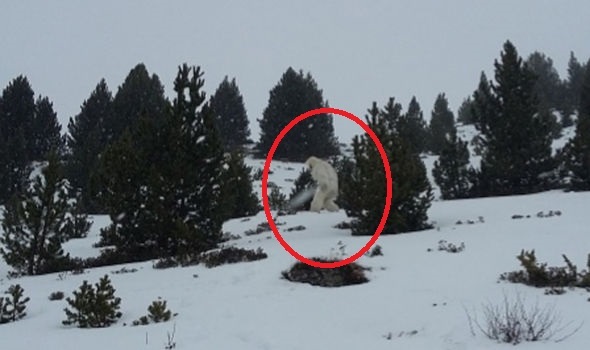
Tales of a mysterious creature living in the snow-capped mountains have been passed down from generation to generation for centuries. Some believe this mythical beast is known as the Abominable Snowman, or more commonly referred to as "Bigfoot". But is there any proof that Bigfoot actually exists? Let's take a look at some of the most popular pieces of evidence presented by supporters over the years.
The first piece of evidence is photographic evidence. Many people claim to have seen photos or videos of a large creature resembling an ape roaming the wilds of North America and other countries like Russia and China. However, most experts agree that these images lack sufficient detail to establish their authenticity beyond a shadow of a doubt.
The following are eyewitness accounts from people who claim to have seen Bigfoot up close. While these stories are compelling, they are often difficult to verify because they rely on memories and perceptions that change over time and differ from person to person. Furthermore, many skeptics point out how unusual it would be for one species of animal to go undetected for such a long time despite so many sightings all over the world.
Finally, physical evidence such as footprints and hair samples allegedly belonging to Bigfoot is presented. Several finds matching these descriptions have been reported over the years, but none has been definitively proven due to inconclusive results and faulty testing methods used by researchers in the past.
We don't know whether Bigfoot exists with absolute certainty at this point, but that doesn't stop us from being fascinated by this seemingly mythical creature! Let us keep an open mind about what may or may not be lurking in our forests until more conclusive evidence becomes available!
Unraveling the Mysterious Case of the Abominable Snowman
For decades, myth and legend have surrounded the enigmatic Bigfoot or Sasquatch. But did you know that there is another equally mysterious creature, with its own set of mysteries, deep in the forests of Asia? It's known as the Abominable Snowman, and while it has some similarities to Bigfoot, there are also many differences between the two. In this entry to my series "Uncovering Mysterious Legends and Lore", we'll look at the Abominable Snowman and see why it's not just another version of Bigfoot.
First, let's take a closer look at what an Abominable Snowman is. Legends about this mythical creature date back hundreds of years in Tibet and Nepal. It's described as an ape-like beast with long arms and body fur. Some say that this species appears in mountainous regions when snow begins to fall and disappears when the weather warms up again - hence why it has been given the name "Abominable Snowman". Despite the lack of solid evidence, reports of sightings continue to circulate throughout Himalayan communities and even beyond!
Tibetan Folklore
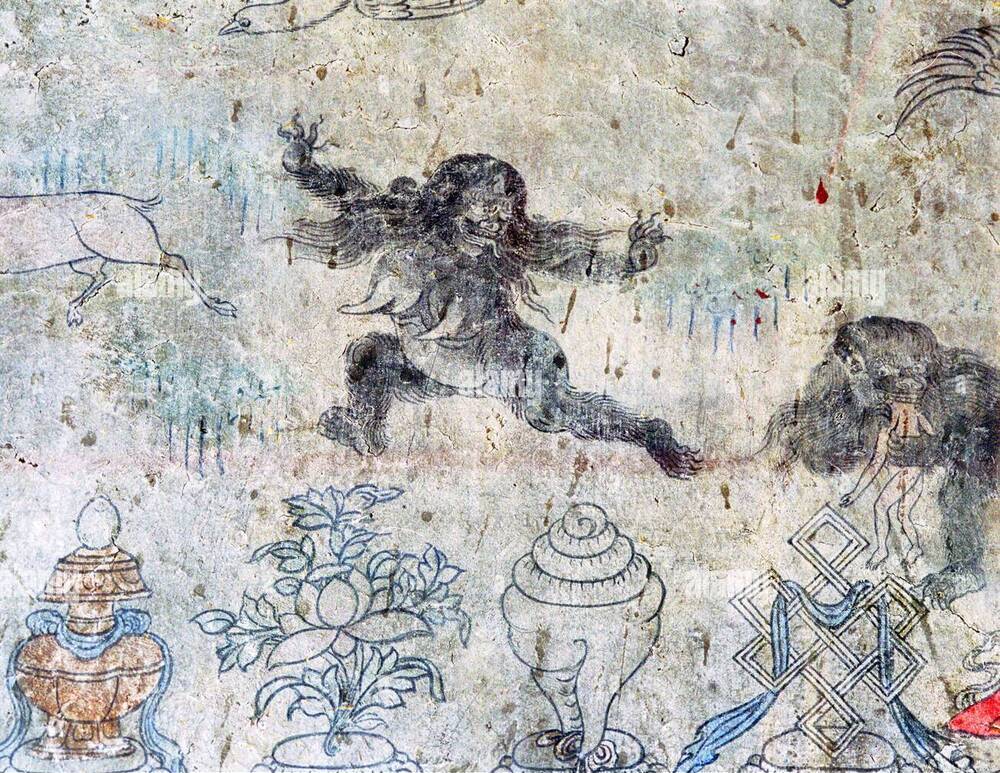
Tales of a mysterious and powerful creature roaming the high mountains have long been told in Tibet - an ape-like animal so large and strong that it was thought to be capable of attacking humans or yaks. This legendary creature is commonly referred to as the Abominable Snowman.
The stories about this creature vary; some say it has magical abilities like invisibility or the ability to bring great wealth upon capture. However, it is also described as highly intelligent, making it extremely difficult to spot and thus uncommon to encounter in the wild.
Despite these mythical accounts, some evidence suggests that the creature may exist. Along with his mountaineering party, British explorer Eric Shipton photographed a mysterious humanoid footprint in Nepal in 1950. Since then, no similar images or evidence that would corroborate these stories have surfaced, leaving the truth of this creature shrouded in mystery and folklore.
Whether or not the Abominable Snowman is real, its presence continues to captivate audiences around the world and spark discussions about what might be lurking in Tibet's high mountains.
Eric Shipton in Tibet:
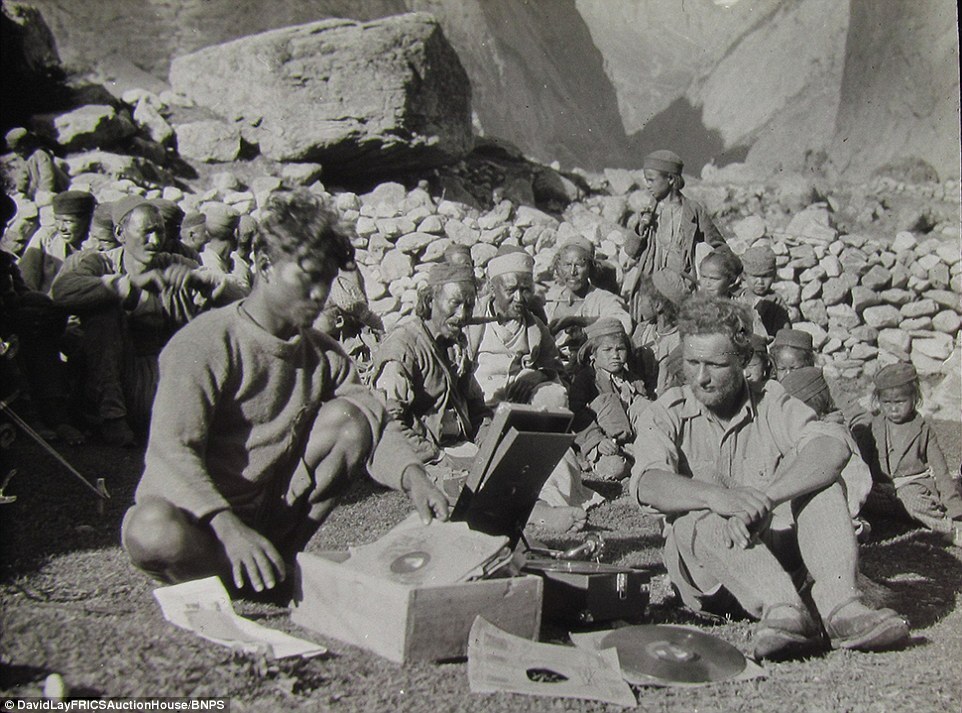
Eric Shipton, a British explorer, was no exception; he set out to explore Tibet's many mysteries in 1951. The abominable snowman seemed to fascinate him the most of all these legends, and he set out to discover whether or not this creature truly existed.
Eric's Expedition - An Epic Adventure into the Unknown
Eric began his journey through some of Tibet's most remote and extreme regions. Along the way, he traversed glaciers, explored high-altitude passes, crossed mountain ranges, and encountered unusual weather patterns.
Mr. Shipton kept looking for evidence that could prove the existence of an abominable snowman in this part of the world throughout his journey. Eric interviewed locals about their experiences and observations of this mythical creature, in addition to looking for physical evidence such as footprints or hair samples.
Evidence Found – What Did Eric Discover?
At the end of his two-month journey, Eric discovered what he thought were signs of a possible yeti presence in Tibet's highest mountain range. Large footprints were discovered in several locations, as well as sightings from villagers who claimed to have seen a tall, ape-like figure moving around on several occasions.
Despite the fact that there was no scientific proof that an abominable snowman existed within Tibetan borders at the time, Eric felt he had come closer than ever before to finding concrete evidence supporting its existence.
Is There Still Hope?
People are still looking for conclusive evidence of an abominable snowman's presence in Tibet or elsewhere around the world. While we may never know if one exists, explorers like Eric Shipton will be remembered for their daring journeys into unknown territory and their dedication to solving life's greatest mysteries!
Nepalese Tales – The Mysterious Yeti of Nepal

Many mysterious stories surround Nepal, one of which revolves around the Yeti, an elusive creature thought to be a type of abominable snowman. For centuries, tales of these creatures have made their way through the region's monasteries.
According to these stories, the Yetis would frequently try to imitate human behavior, such as singing and playing music, or even offering food at shrines, but were never successful due to their primitive nature. As a result, these strange creatures frequently disrupted prayer ceremonies, and locals were terrified. Furthermore, they were said to have a habit of stealing food and livestock from surrounding areas, leaving behind footprints much larger than those left by any man.
Though there has yet to be conclusive proof of these creatures' existence, Nepalese legends about the Abominable Snowman remain as enigmatic as ever.
There are several differences between Bigfoot and the Abominable Snowman that can help us understand why they are two very different creatures. For starters, Bigfoot typically inhabits forested areas rather than snowy mountainous regions like those associated with sightings of the Abominable Snowman. Furthermore, while both creatures have similar physical descriptions, such as being covered in hair, they differ greatly in size; Bigfoots appear to be larger than their icy counterparts! Furthermore, while they do share similarities in terms of shyness around humans, each species exhibits different levels of avoidance when confronted with human contact, suggesting that these two creatures are, in fact, separate species!
Several theories about where these creatures came from have been proposed over time, but none seem definitive enough for either species; however, researchers believe that natural selection could explain how these animals evolved differently depending on their environment, which would account for their varying features!
While much mystery surrounds both Bigfoot and The Abominable Snowman, one thing is certain: these two creatures are not the same! We can help solve part of this centuries-old mystery by understanding some key differences between them!
Yetis as Characters in Popular Culture:
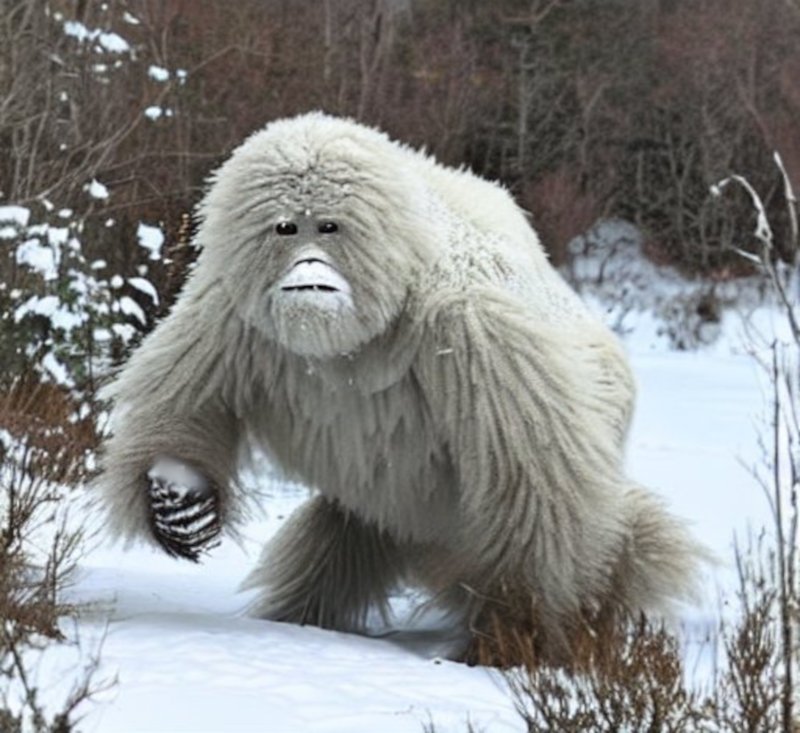
The yeti, or Abominable Snowman, is a popular cultural figure. For centuries, the mysterious creature has captivated imaginations and continues to do so today. Yetis appear frequently in modern pop culture, from books and movies to television shows and video games. This blog post will look at some interesting examples of yetis appearing in various mediums.
Books About Yetis
The novel The Girl Of Ink & Stars by author Kiran Millwood Hargrave is one example of yetis appearing in literature. This fantasy novel follows a young girl who embarks on an adventure with her best friend, a magical yeti, to save her beloved island from destruction! Other examples include Piers Anthony's On A Pale Horse which features Imp y Celyn, a Welsh character based on the Celtic tales of elves and fairies; Terry Pratchett's Discworld series; and Rick Riordan's The Kane Chronicles which includes the god Anubis as a half-human-half-yeti hybrid called "Banebdjedet".
Films Featuring Yetis
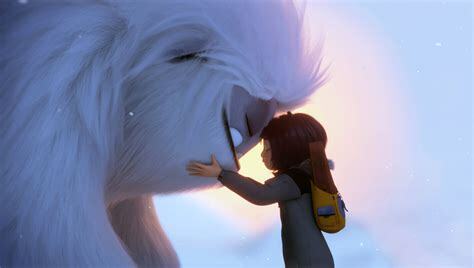
Yetis have long appeared in films, usually as antagonists or comic relief characters. Examples include Monsters Inc., where Mike Wazowski's arch nemesis Sulley takes on the form of a yeti; Smallfoot from 2018 featuring Channing Tatum as Migo the Yeti; Santa Clause 3 where Tim Allen's Santa Claus battles with Jack Frost's ill-intended plans involving a team of mischievous yetis; and even Disney classics like Peter Pan where Chief Great Big Little Panther is an anthropomorphic panther/yeti hybrid created by Captain Hook.
TV Shows with Yetis
Yetis have appeared as main characters or major players in several TV shows in recent years. For example, Nickelodeon's Hey Arnold! featured an episode centered on Helga attempting to prove the existence of Bigfoot; Adventure Time featured recurring appearances by Ice King's faithful guardian Gunter (who was later revealed to be a giant talking ice cube with a penchant for mischief); Netflix acquired animated series Kung Fu Panda featured Po battling supernatural forces alongside his fellow pandas in one memorable episode; and Cartoon Network's
Yetis Video Games
Yetis are also frequently seen in video games. Crash Bandicoot 2: Cortex Strikes Back contains two levels full of frosty creatures such as penguins and, you guessed it, plenty of evil snowmen (and snowwomen!). During the winter months in Animal Crossing New Horizon for Nintendo Switch, players can find snowy presents scattered across their islands, each containing special items or furniture crafted from icy materials by resident snowman Pascal! Finally, Pokémon fans will recognize Beartic, a bipedal bear Pokemon that resembles an abominable snowman and whose signature move Blizzard deals significant damage due to its freezing temperatures!
Overall, it's clear that yetis have left their imprint on popular culture through various mediums over time. Whether portrayed as heroic protagonists or evil villains (or sometimes both! ), these monstrous figures continue to pique our interest and make us wonder what mysteries may lie beneath our feet whenever we hear reports of sightings deep within nature's most secluded regions.

I read somewhere that it's important to stay engaged with your readers and provide quality content on a consistent basis as a blogger (which I don't consider myself to be). However, many bloggers become preoccupied with producing as many posts as possible without devoting enough time to each one. It's ironic, because I haven't done either. As of this year, my output has been zero, despite the fact that I really wanted to write but couldn't find the time. When I returned, I started writing like crazy, most of which ended up in the trash, while the rest were saved as drafts (you should see how many ideas I have marked as drafts), and nothing was published until recently. That's when I came to a halt and asked myself what my objective was. I needed to get it out of my system at first, so I wrote posts that could be summarized as ideas. I've recently taken the opposite approach, slowing down and putting more thought into my blog posts, and I believe the results have been far more rewarding.
Creating meaningful content necessitates meticulous planning and dedication. First and foremost, you must decide on a broad topic or concept to discuss. Research can be useful here; look online for related topics that can add depth to your post. Once you've decided what you're going to write about, it's time to start shaping your thoughts into something coherent and exciting. Brainstorming can also aid in this process; writing down any ideas that come to mind during this stage will make structuring your post much easier later on. Finally, don't forget to go back through and proofread your work once you're finished! Even a simple spelling error can diminish the impact of your piece.
Investing more time in blog creation may appear daunting at first, but if done properly, it is well worth the effort. This not only allows you to carefully consider every aspect of what you're attempting to communicate, but it can also leave readers feeling more satisfied after reading a meaningful post, enticing them to return for more in the future! It can be tedious at times, but with patience and dedication, we can all produce engaging content that stands out from the crowd.
That sounds like a lot of work, but I'll be honest and say that it works. I freed myself up to focus on what has value by putting less emphasis on writing something, anything. The topic of today's post is something very important to me, quality time with family, and I hope that what I just shared with you is evident in the rest of my post.
It can be difficult to find time to spend with family and friends when life becomes hectic. However, quality time is an important part of maintaining relationships and creating long-lasting memories. Here are some ideas for making the most of your limited time together:
Set Aside Special Time for Your Loved Ones
A busy life can make it difficult to spend quality time with those you care about. Planning ahead of time is essential for making the most of your time together. Making and following through on plans can help ensure that your loved ones get the attention they deserve.
It is critical to develop a routine of devoting specific hours each week or month to spending time with family and friends. It could be as simple as setting aside Sunday afternoons for lunch with a friend or Friday nights for family game night. Having the same time blocks each week will help you remember when to prioritize your relationships. You'll also benefit from knowing exactly what you should be doing at any given time throughout the week or month.
To stay organized and on track for making plans for quality time together, consider setting weekly reminders on your phone, putting post-it notes around the house, or even creating a calendar system. Furthermore, having something fun planned during these meetings increases motivation for everyone involved and keeps things exciting! Maybe it's going out to dinner once a month or going ice skating on the weekends - whatever it is, make it an event that everyone can enjoy!
Making plans in advance doesn't have to be difficult; simply plan ahead and set aside specific times of the week or month for bonding with those close to you. Instead of waiting until the last minute, set aside some time every now and then; this will not only ensure quality time dedicated solely to your loved ones, but will also avoid conflicting schedules that can arise throughout life.
Remove Distractions
It's difficult to put down our phones, laptops, and other electronic devices in this day and age. We're constantly checking emails, texts, and getting notifications about things we have no interest in. But what if there was a way to stay connected to those around us without having to check our phones every few minutes?
The solution is simple: unplug! Taking a break from technology can help us reconnect with those around us in ways that are impossible when our faces are buried in a phone or laptop. Try putting down the electronics and focusing solely on each other when spending time with family or friends. Without the distractions of technology, this will allow for deeper conversations and understanding of one another.
It may not be an easy task for many of us; after all, technology has become an integral part of many of our daily lives. However, by making a conscious effort to turn off all electronic devices, you will be able to devote more quality time to connecting with those around you. You can truly enjoy your interactions with one another if you don't have to worry about checking emails or text messages during that time together. It may take some getting used to, but once you do, you won't want to go back!
So, the next time you're with family or friends, make sure everyone turns off their phones and simply enjoys each other's company! Unplugging can help strengthen relationships like never before!
Be Innovative
When you do the same things with your family on a regular basis, it can become monotonous. If you want to spice up your social gatherings, there are a variety of exciting activities that can keep things interesting and fun every time you get together.
Board games are a great way to liven up any gathering. They not only provide endless entertainment, but they also foster friendly competition among your group members. There are numerous board game options available, ranging from traditional favorites like Monopoly or Scrabble to new releases like Ticket to Ride or Codenames. You'll never run out of new games to try!
Going outside with your family can be just as enjoyable as staying inside. A walk around the neighborhood, a hike, or even organizing a picnic in the park can be excellent ways to catch up and enjoy each other's company away from home. The added benefit? All of this activity will leave you feeling energized rather than lethargic from sitting around all night!
Consider hosting a potluck dinner at home with your closest friends or family members if you're looking for a low-key way to shake things up. Everyone is welcome to bring their favorite dish and share delicious meals while catching up on life. It's a great way to unwind and enjoy some quality time together without worrying about where everyone will meet or what activity you'll do afterwards.
It doesn't have to feel like Groundhog Day every week when you get together with your friends! Including a variety of activities in the mix keeps things interesting and ensures that everyone has a good time together regardless of what they end up doing. Start playing board games, go for walks outside, or host potluck dinners at home - whatever you do, keep things interesting!
Emphasize Meaningful Communication
It is essential to ask questions, tell stories, listen carefully, and simply enjoy each other's company in order to foster meaningful conversations that create lasting bonds between family members and friends. This has the potential to bring people together in unexpected ways.
Asking thought-provoking questions is one of the best ways to encourage meaningful conversations. This can include anything from their favorite childhood memory to the last time you laughed hard with them. This helps to foster an environment of openness and honesty in which people feel comfortable sharing their thoughts and experiences with one another. Furthermore, when asking questions, give your full attention and actively listen as the person responds; this will demonstrate to them that you genuinely care about what they have to say.
Storytelling is another effective way to start meaningful conversations. We all have unique stories about which we are excited or passionate, whether it is about a past experience or a current hobby. It's always nice to share these stories with our loved ones because it allows us to connect on a deeper level while also providing insight into who we are as people.
Last but not least, simply relaxing and enjoying each other's company is a great way for family members and friends to form long-lasting bonds. Whether it's cooking dinner together or taking walks around the neighborhood, being able to be present and appreciate the moments spent together can do wonders for any relationship!
At the end of the day, open communication fosters meaningful conversations that foster long-lasting bonds between family members and friends. So, the next time you have a conversation with a loved one, remember to ask thoughtful questions, tell engaging stories, listen attentively, and simply enjoy being together!
The Value of Spending Quality Time With Family and Friends
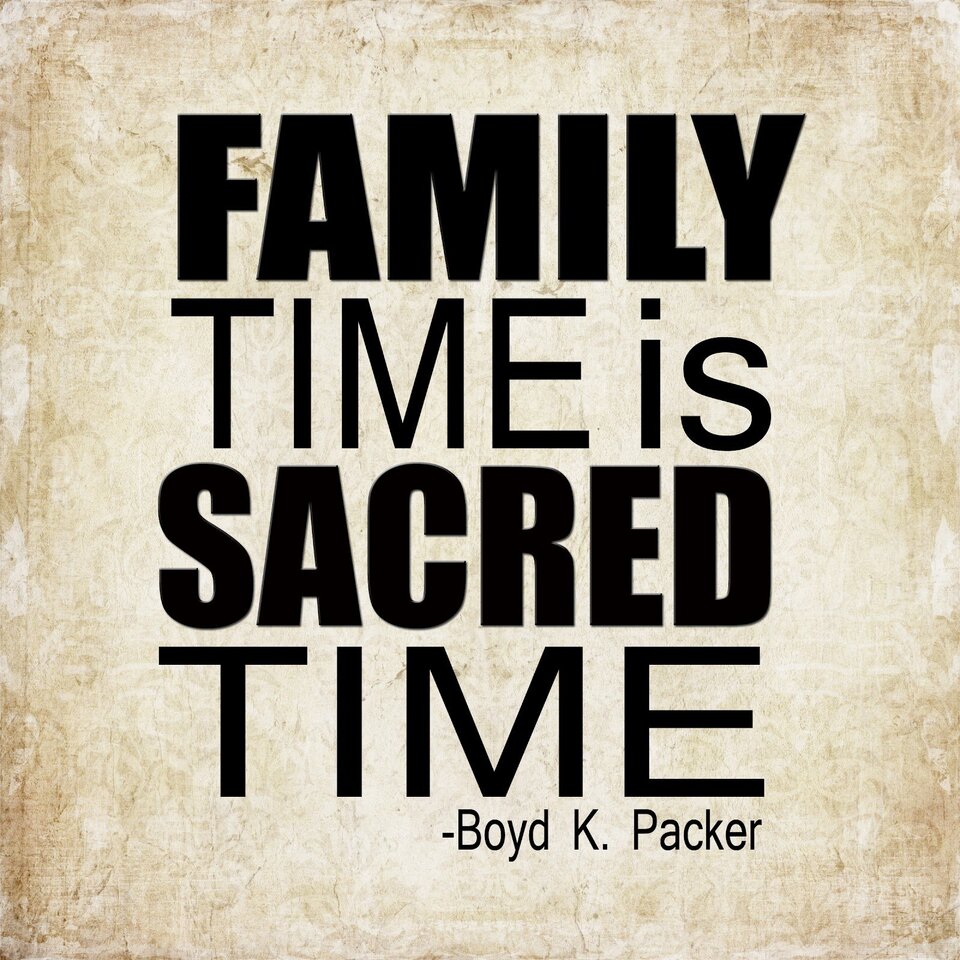
Years ago, I read that spending quality time together is not only important for bonding, but it also promotes better overall health. To be honest, I didn't give it much thought when I read it in a magazine I bought for a flight. As I sat there waiting for my flight, I read through the other articles, but none of them stuck with me.
It can be difficult to find quality time to spend with the people we care about most in today's hectic world. With jobs, school, and other responsibilities taking up so much of our time, it can be difficult to make time for our families and friends. Even if we have a limited number of hours in the day, we can make every moment count if we prioritize quality time with those who matter to us and follow some simple guidelines.
If you're struggling to make meaningful connections with your loved ones in the midst of a hectic schedule, I've summarized the list of suggestions to help you make the most of each shared moment:
- Try setting aside an hour or two on certain days of the week for quality time with your family or friends, even if you don't have the ability to plan spontaneous hangouts with them at any given time. This way, everyone is aware that this is the time set aside for connecting without interruptions such as work emails or phone notifications.
- Choosing activities that are meaningful to everyone involved will ensure that your shared experiences are rich and intimate. Walking in nature may evoke happy memories of childhood hikes; cooking a favorite recipe together may result in delicious recipes being passed down through generations; and playing board games may elicit a lot of laughter among family members. Thinking creatively and selecting items that best reflect what is most important to your group will ensure a successful hangout session!
- While technology has become an integral part of our lives, it is important to put phones, tablets, and laptops away when spending quality time with our loved ones. Choose locations that do not have wifi access if possible so that no one is distracted by their devices for the duration of your session together - this will also encourage more conversation and interaction between everyone present!
- Use this valuable time together as an opportunity for open dialogue without judgment or criticism - talk about what matters most and make sure everyone feels heard during these conversations so that meaningful connections can form over time. Whether you're discussing hopes and dreams or more complex issues like politics or religion, remember that communication is essential!
Quality time with loved ones is limited, but if we prioritize it and use these tips, we can make the most of every moment spent together! So turn off the technology, engage in meaningful activities, and foster genuine conversations - every second spent creating memories with those we care about will last forever!
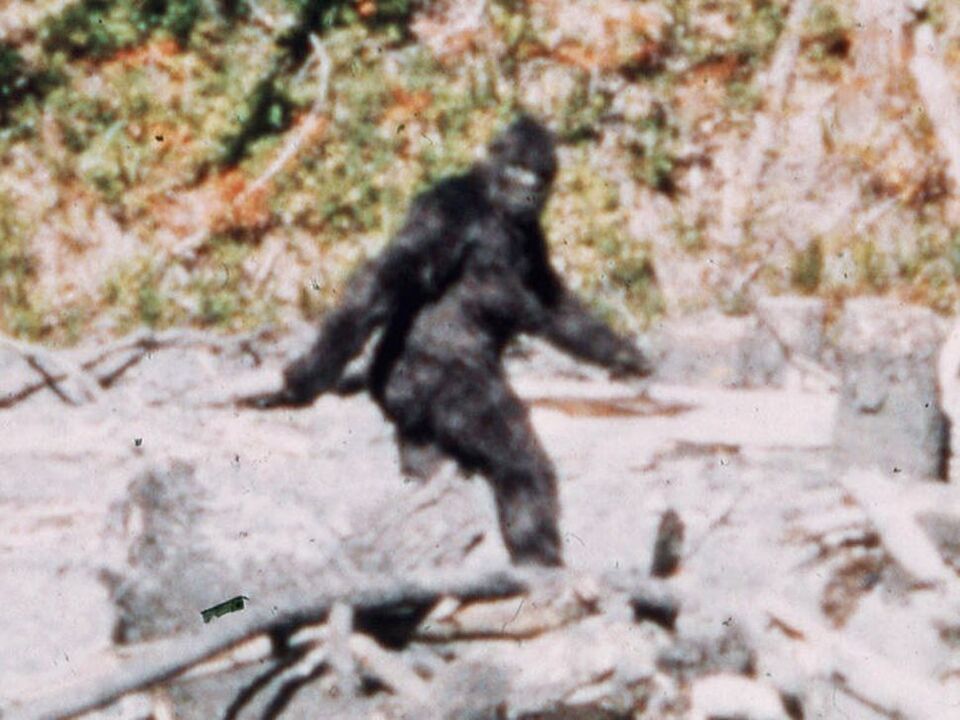
For years, stories about a giant creature roaming the forests of North America have captivated people's imaginations. For decades, the infamous "Bigfoot" has been shrouded in mystery and speculation, with no concrete evidence that it exists. This hasn't stopped dedicated researchers from attempting to uncover the truth about this legendary beast. As people try to solve the mysteries of Bigfoot, more evidence is being gathered than ever before.
Eyewitness accounts have continued to be reported in Canada and the United States in recent years. People claim to have seen strange humanoid creatures walking upright through remote areas; these sightings are frequently supported by alleged Bigfoot tracks. Furthermore, some scientists believe that forensic analysis could yield conclusive evidence proving Sasquatch's existence once and for all.
Furthermore, it's not just scientific research into this phenomenon; an increasing number of people are taking a personal interest in learning more about Bigfoot. Private investigators are traveling across the country interviewing witnesses and collecting samples for further examination, in the hopes of providing more conclusive evidence about what is truly lurking among us!
Whether you believe in it or not, one thing is certain: Bigfoot continues to captivate our collective imagination like no other cryptid on the planet. As research continues and new stories emerge, we may eventually find irrefutable proof that Bigfoot exists!
Today we are going to dig deep into the background surrounding Bigfoot as we start the first in my "Uncovering Mysterious Legends and Lore" series.
Unbelievable Bigfoot Facts You Probably Didn't Know
Whether you believe in Bigfoot or not, he is an enduring creature of mystery and intrigue. There are numerous stories about the mythical creature that refuses to go away, ranging from blurry photographs and shaky videos to countless reported sightings. Here are five fun facts about Bigfoot that you probably didn't know!
- Contrary to popular belief, Bigfoot has not only been sighted in North America; reports of similar creatures have been made all over the world, and they all share similarities. In China, for example, there is a legend of the Yeren, while Russia has its own version called Almasti.
- The term "Bigfoot" was coined in 1958 after a newspaper reporter named Andrew Genzoli published an article about some tracks discovered near Bluff Creek, California. He dubbed the creature "Bigfoot," and the name has stuck ever since.
- There have been over 10,000 reported sightings of Bigfoot - Since 1950, when construction workers discovered strange tracks near Mount St Helens, there have been nearly 11,000 reports from people claiming to have seen a creature matching the description of Bigfoot in North America alone!
- Some believe Bigfoot is an undiscovered primate species - While most scientists agree that this is highly unlikely given our current knowledge of primates, some still believe that a population has managed to remain hidden from us all this time!
- In 1967, two men, Roger Patterson and Bob Gimlin, were scouting for locations when they came across what appeared to be a female bigfoot along Bluff Creek in California. They then took a now-iconic photograph of what appears to be the mysterious creature walking alongside them before disappearing into nearby woods!
Whether you believe in the myth or not, these fascinating facts may cause you to reconsider your position on this legendary beast! Do you have any other fascinating Big Foot facts? Please leave your comments below!
The Bigfoot Field Researchers Organization
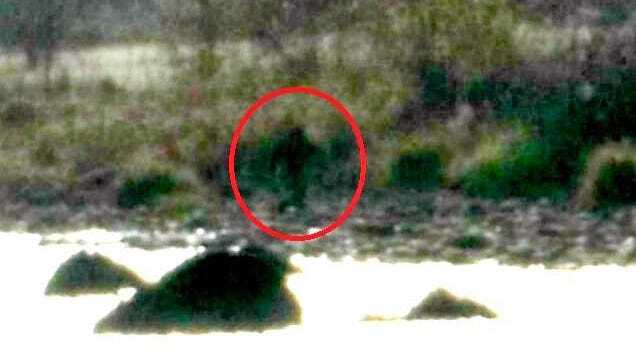
Are mythical creatures, such as Bigfoot, merely figments of our imagination? Is there something more to these stories than meets the eye? The work of some dedicated researchers may hold the key to the truth. The Bigfoot Field Researchers Organization (BFRO) is a non-profit dedicated to unraveling the mysteries surrounding legendary creatures such as Bigfoot.
Matt Moneymaker founded the BFRO in 1995, and it has since become one of the leading organizations for researching and investigating reports of bigfoot sightings.
One name stands out when it comes to Bigfoot hunting: Matt Moneymaker. Moneymaker, the founder and President of BFRO, has been looking for cryptids since his first sighting in 1991. He is a dedicated, passionate researcher who has made it his life's mission to discover proof that these enigmatic creatures do exist.
Moneymaker was born in Georgia but moved to California with his family when he was a child. He began exploring the forests of the Pacific Northwest as an adult, where he came across what appeared to be a large unidentified bipedal creature wandering through the trees. This encounter piqued his interest in cryptozoology and set him on a quest to learn more about these enigmatic creatures.
Moneymaker founded BFRO in 1995 to bring together like-minded people interested in investigating sightings and sharing ideas about potential proof of unknown species roaming our wildernesses. Over the years, he has gathered a global team of researchers and continues to coordinate expeditions and public events across North America.
Moneymaker, in addition to leading BFRO investigations, also served as Executive Producer on Animal Planet's "Finding Bigfoot" show, which follows him and three other field researchers as they travel around looking for clues that could lead them closer to solving the Bigfoot mystery.
Moneymaker has long been a proponent of responsible cryptid research, encouraging people to report sightings responsibly while respecting local laws regarding private property or restricted areas. His enthusiasm and dedication to discovering the truth behind this contentious topic have made him one of the most well-known figures in cryptozoology today!
The group collects evidence related to Bigfoot sightings using scientific methods, including physical evidence such as hair or footprint samples, as well as audio or video recordings. The organization also keeps detailed records on current and previous investigations, which it shares with the public via its website and social media platforms. They hope that by doing so, they will encourage people to report any possible sightings they may have and contribute to shedding new light on these mysterious stories.
In addition to gathering evidence, the BFRO hosts a number of public events throughout the year where members can hear from experts in the field and participate in discussions about their research findings. It is also an opportunity for anyone who believes they have seen a bigfoot to report it to them directly. Their team will then conduct additional research and, once completed, will provide a detailed report on their findings.
So far, the BFRO has gathered compelling evidence that something strange is out there that we have yet to discover - but what could it be? With their dedication and hard work, perhaps we'll finally get some answers about this enigmatic creature known as "Bigfoot" one day.
Taking a Closer Look at Bigfoot in Popular Culture: Harry and the Hendersons
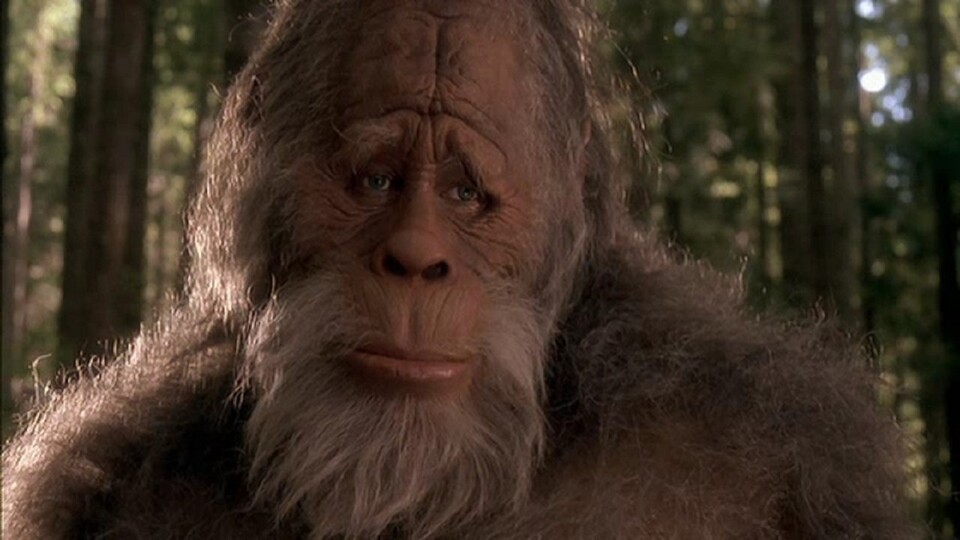
Bigfoot, also known as Sasquatch, has long been a part of popular culture. This mysterious figure has captivated audiences all over the world, from ancient indigenous folklore to modern-day films. The 1987 comedy-drama film "Harry and the Hendersons" featured one of the most iconic depictions of Bigfoot. Let's take a closer look at how this film explored the legend of Bigfoot through realistic but humorous storytelling.
The story revolves around George Henderson (John Lithgow) and his family, who hit a young Sasquatch with their car on their way home from camping in the Cascade Mountains near Seattle, Washington. They bring him home and give him the name "Harry" after their fatherly grandfather. Through their interactions with Harry, they discover that he is a sentient being with feelings and emotions, just like humans. Further exploring themes of acceptance, George reluctantly befriends Harry despite his family members' initial fear and trepidation. They eventually understand and accept him as a member of the family unit.
"Harry and the Hendersons" expertly combines humor and realism throughout its runtime to create an entertaining yet informative experience about one of humanity's oldest mythologies—Bigfoot. The script contains references to various scientific theories related to cryptozoology, such as fur samples found on tree trunks or large footprints left in mud puddles; these elements add an extra layer of credibility to the story being told on screen. Aside from these more serious elements, many comical moments emerge throughout the film as a result of George's awkward interactions with his new companion, as well as other characters in town who are unsure how to react when they see a fully grown human-like animal walking around.
Finally, whether you watch it for laughs or because you're fascinated by cryptids like Bigfoot, "Harry and the Hendersons" has something for everyone! This beloved classic has remained relevant in our family library for years due to its charming atmosphere and fun writing that both adults and children can enjoy together.


It can be difficult to find quality time with family in this day and age. Work and other obligations can easily get in the way of spending quality time together. Outdoor activities, on the other hand, are an excellent way to bond and strengthen relationships. They not only provide an opportunity to get away from everyday life, but also allow families to create new memories that will last for years to come.
Hiking is an excellent way to explore nature while spending quality time with family and friends. There are a variety of routes that cater to all abilities, whether it's a leisurely stroll through nearby trails or more adventurous hikes up rugged mountains. Hiking is not only good exercise, but it can also be an educational experience, with opportunities to see wildlife and learn about different plants and ecosystems encountered along the way.
Another enjoyable activity that allows families to challenge themselves in a safe environment is rock climbing. Most rock climbing walls have varying levels of difficulty, so even complete beginners can participate and try their hand at scaling smaller heights before progressing to more difficult routes. Rock climbing not only gives you plenty of bragging rights when you reach the top, but it also teaches important skills like problem-solving and teamwork, which are both useful when trying to tackle obstacles together later on!
Camping trips are not only inexpensive, but also a great way for families to connect outside of the home. With no television or computers nearby, it may be easier for everyone to engage in conversation without distraction while surrounded by the beauty of nature. Daytime camping offers plenty of entertainment as well as traditional camping games like charades or scavenger hunts when it's dark outside - fishing trips on local lakes, canoeing down rivers, or simply exploring nearby woodlands all count as memorable bonding experiences!
There are numerous advantages to bonding through outdoor activities, including improved physical health due to increased physical activity levels; learning about nature; relieving stress by disconnecting from our daily lives; forming genuine connections with loved ones; learning important skills such as problem-solving and teamwork; and creating lasting memories that you'll cherish forever!
Outdoor activities can be a great way to bond and make memories with your family when it comes to spending quality time together. Outdoor activities provide an excellent opportunity to disconnect from the stresses of everyday life while reconnecting with loved ones in novel ways.
Here are some ideas I came up with to help you have fun while also building strong relationships with those around you.
Go for a Hike
Many people strive to be close to their families, and one great way to bring family members closer together is through outdoor activities such as going on a hike. Exploring nature with your loved ones is not only a fun way to spend time together, but it also provides ample opportunities for conversation, laughter, and creating new memories. Furthermore, everyone has the opportunity to benefit from some physical activity!
Recently, hiking has become increasingly popular for good reason; it's a fun and healthy way for the whole family to get outside and connect. Family members can enjoy some light exercise and fresh air together in a beautiful setting. Having fun together like this is great for building friendships and community. And because hikes can last for days, the whole family can spend quality time together bonding over the experience.
When it comes to strengthening familial bonds, communication is essential, and conversations on hikes can significantly improve relationships between parents and their children, as well as siblings. Hiking provides moments of peace that are ideal for discussing significant events that have recently occurred in each other's lives; this can help eliminate misunderstandings and build empathy for others' situations.
In addition to giving everyone some much-needed fresh air away from confined indoor areas where TVs and other devices tend to dominate conversation, going on a hike is a great way to spend quality time together without any interruptions. When you reach your final destination at the end of a hike (be it a lake or a mountain peak), you can look around and feel proud of the teamwork and effort that got you there.
Hiking as a family can be extremely beneficial for all types of families; regardless of how large or small your group is, you'll reap plenty of benefits from bonding through this type of outdoor activity - both physically and emotionally!
Go Camping
Spending time as a family is essential for making lasting memories and strengthening bonds. While phones, tablets, and computers can be useful in many ways, they can also be distractions that prevent us from fully immersing ourselves in the moment with our loved ones. This is why bonding through outdoor activities like camping is so important.
Sleeping under the stars or roasting marshmallows over a campfire can result in some unforgettable shared experiences. Even if you stay close by or go on a short trip, it's important to unplug from all electronics and enjoy nature's beauty together. Exploring the outdoors frequently results in unexpected discoveries, new conversations, and creative thinking among family members, which is not likely when spending time at home.
Furthermore, studies have shown that spending time outside, surrounded by trees and wildlife, can improve both adults' and children's mental health. Whether it's a simple stroll through a park or more adventurous hikes, spending time in nature can help reduce stress and bring families closer together through shared experiences. Aside from the link between nature and mental health benefits, there are also physical benefits gained from outdoor activities such as camping, such as increased physical activity levels from walking or playing games outside.
Camping with your family has numerous advantages that should not be overlooked. From making wonderful shared memories to improving overall well-being, it's clear that bonding through outdoor activities has something special to offer everyone involved!
Go For A Bike Ride
Although not everyone enjoys camping, biking is a great way to get out in nature and spend quality time with family and friends. Biking not only provides exercise and fresh air, but it also allows you to explore local parks, trails, and other outdoor areas while bonding with those you care about. Biking may appear to be a simple activity, but it is one of the most enjoyable and beneficial ways to spend time outside.
One of the most significant advantages of biking is that it allows for physical activity without feeling like a chore. Pedaling down a path with loved ones provides more than just exercise; it creates shared experiences as well as conversation topics for later. Furthermore, because there are many different types of paths suitable for varying skill sets, biking can be enjoyed by almost anyone, regardless of age or ability level.
Exploring the surrounding scenery on two wheels has distinct advantages over walking or running. When you bike around town instead of driving, you can observe your surroundings in greater detail, such as architecture and wildlife. This not only helps you create lasting memories with those close to you, but it also gives you insight into what defines the character of your community - something that cars simply cannot do!
Biking can be used as a mode of transportation as well as a form of physical activity and sightseeing. Depending on where you live, this could serve as an eco-friendly alternative to using gas-powered vehicles for short distance travel. This will not only help you reduce your personal carbon footprint, but it will also save you money!
Overall, cycling through nature is both enjoyable and beneficial in many ways, making it an excellent choice for spending quality time outdoors with family and friends. Enjoy the simple pleasure of pedaling down a path side-by-side — knowing that every turn has something new in store! Whether you use bikes for exercise or travel.
Play Sports
You know how important it is to spend quality time with our families if you're reading this; however, getting everyone together can be difficult. But don't worry; organizing friendly competition through outdoor activities is a great way for you and your family to bond. At the very least, it works for my family. Playing sports outside, whether baseball, basketball, soccer, or even Frisbee golf, helps create lasting bonds through competitive play or simply catching the ball with each other.
Outdoor activities are advantageous for a variety of reasons. Physical activity in the fresh air, for example, boosts energy levels and improves overall health; additionally, being outside can reduce stress and anxiety levels. Furthermore, team-building sports allow family members to work together as a unit, which can improve communication skills. Playing catch teaches children better hand-eye coordination while also teaching them how to win graciously when they fall short against an opponent.
Consider having your own family game night when the weather permits if you want to take family bonding through sports a step further! This will not only make everyone's day more exciting, but it will also allow you to create lasting memories together. It would be ideal if you had access to outdoor courts or fields near your home. If you don't have much space in your yard, try making makeshift bases out of cones or rubber balls as "pitching machines," and pick up some gloves from a nearby store.
Playing sports outside has numerous advantages for both children and adults, so why not give it a try? With just a few simple preparations and good intentions, you can begin strengthening your relationships with those around you in no time!
Have A Picnic
If sports aren't your thing, picnics are a great way for families to get together and bond in the great outdoors! Picnics not only provide a unique bonding experience, but they also have numerous advantages. Here are some of the reasons why organizing an outdoor picnic is an excellent family activity.
Picnics, first and foremost, provide quality time spent together away from screens and other distractions. Spending time outside as a family can be both mentally and physically beneficial. There's no need to be concerned about phones ringing or television shows playing in the background when you're outside with your loved ones! This distraction-free environment facilitates meaningful conversations and connections that may not be possible indoors.
Another advantage of going on a picnic is that it promotes physical activity. Having a picnic outside requires everyone to get up and move around to find a good spot, whether it's in the backyard or at a nearby park. Exercise improves positive moods, so incorporate it into your family's gathering activities. Furthermore, being outside exposes you to fresh air, which can naturally boost energy levels and reduce stress, making it easier to enjoy each other's company!
Picnicking allows families to spend time together while enjoying delicious food outside. Whether you make your own snacks or order takeout, getting creative with different recipes adds excitement to family gatherings outside. This not only brings families closer together by providing conversation starters about food preferences and tastes, but it also promotes healthy eating habits!
Overall, bringing some snacks and going on a picnic is one of the best ways for families to bond through outdoor activities! Picnicking not only provides quality time away from distractions, but it also encourages physical activity while allowing everyone to enjoy tasty meals outdoors together - making it the ideal family activity!
Outdoor activities offer an ideal setting for families looking to get away from their daily routines while also creating positive experiences on multiple levels - both physically and emotionally! So, this summer, why not try something new and spend quality time with your loved ones?


















